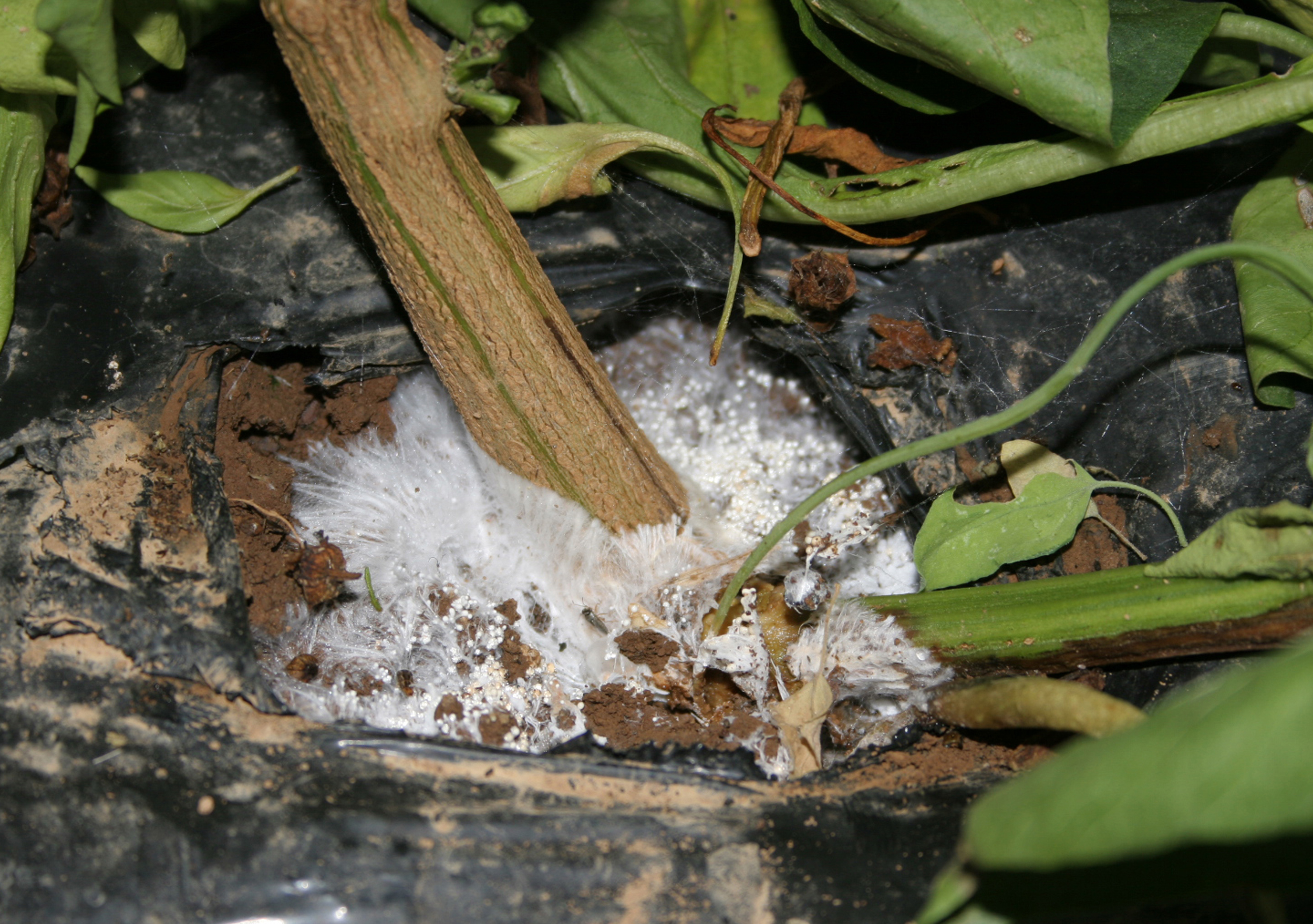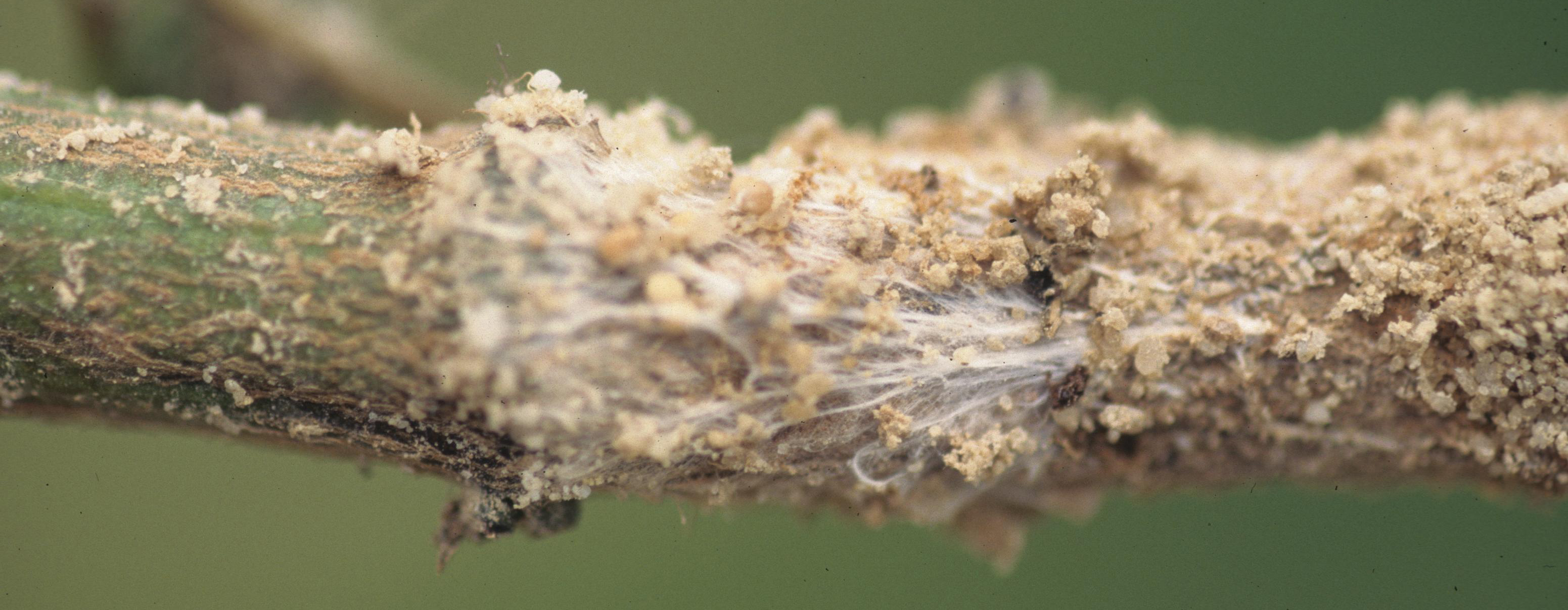Southern Blight of Pepper
Return to Diseases
Southern blight (Athelia rolfsii, syn Sclerotium rolfsii) initially results in a sudden yellowing/browning and wilting of affected plants, followed by death. Lesions or cankers develop at the base of infected stems near the soil line, often extending several inches aboveground. When humidity is high, a dense, white fungal growth (mycelium) may be present on affected plant parts and surrounding soil. Eventually, numerous small (1 to 2 mm in diameter), round, tan-to-reddish brown fungal survival structures (sclerotia) develop on the surface of the mycelium. Low-hanging fruit and those that touch infested soil can become infected, resulting in a wet rot and rapid decay of fruit. Disease is favored by warm, wet conditions.

Southern blight mycelium.
(Photo: Kenny Seebold, University of Kentucky)

Southern blight on stem with sclerotia.
(Photo: Gerald Holmes, Strawberry Center, Cal Poly San Luis Obispo, Bugwood.org)
Management:
- During the season, remove and destroy symptomatic plants if relatively few are affected
- Deep plow or bury crop debris at the end of the growing season
- Rotate with non-host crops
- Avoid movement of infested soil to clean fields
- Limited fungicides are available, and efficacy of these fungicides can be variable
